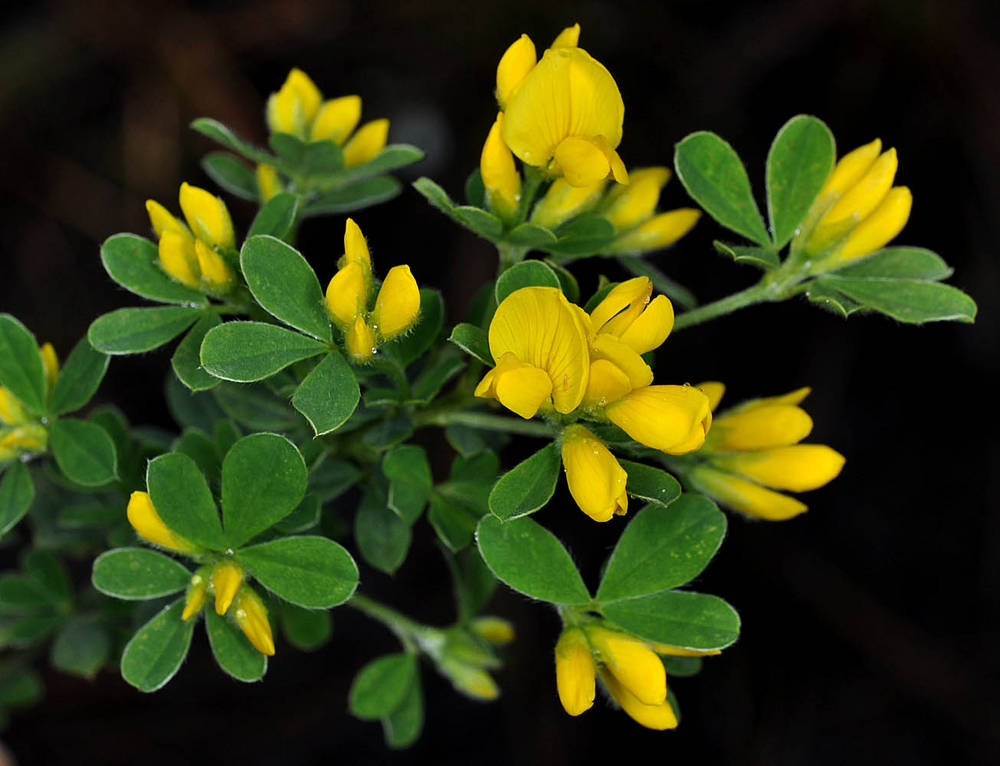
Plants to 3 m, pubescent, densely branched.
Stems flanged, silvery-sericeous when young.
Leaves alternate; leaflets 3, cuneate-obovate, rarely lanceolate, 10–25 × 5–12 mm, 1.5–2.5 × longer than wide, bases cuneate, midribs raised and hairy, margins entire, involute, tips mucronate, surfaces abaxially pubescent; petioles < 5 mm; stipules lanceolate, ? 3 mm, margins entire.
Inflorescences 4–10-flowered, clustered or racemose, 15–25 × 15–22 mm; pedicels 1–4 mm.
Flowers calyces 5–7 mm, sericeous to pilose, upper lips strongly 2-lobed; corollas 10–14 mm, glabrous, keels nearly straight to slightly curved distally; styles exserted.
Fruits dehiscent, 15–30 × 4–6 mm, brown to black, villous or sericeous; stalked.
Seeds generally 3–8, quadrangular to round, flattened, 2.5–3 × 2.2–2.5 mm, brown or black, lustrous.
2n=44, 46, 48.
Roadsides, riverbanks, and sandy areas, dunes. Flowering Mar–Jun. 0–300 m. CR, Est, Sisk, WV. CA, WA; Africa, Australia, Europe, South America. Exotic.
Genista monspessulana is the only species in the genus that is widely established along the Pacific Coast, where it contributes as a parent in most alleged hybrids. In Oregon, the putative hybrid Genista monspessulana × G. stenopetala has been observed only in Curry County where it has been collected from two populations; these plants have larger leaflets (up to 3 cm long and 1 cm wide) that are three times as long as wide and elliptic in shape and flowers that are more numerous, larger, and fragrant. Genista monspessulana is most likely to be confused with Cytisus scoparius based on overall appearance, but upon closer inspection the presence of a style that is curved only near the tip and abundant trifoliate leaves present throughout the plant will confirm the specimen as G. monspessulana and not C. scoparius (which has strongly curved styles and much smaller leaves that are commonly unifoliate on new growth).